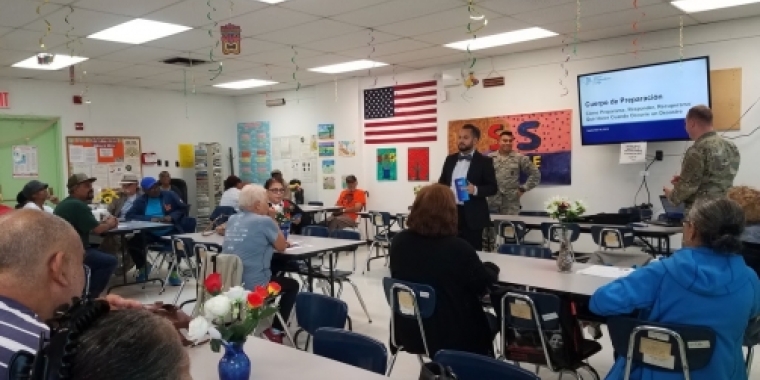
Serrano Comments on La Marqueta Plan
José M. Serrano
August 11, 2009
-
ISSUE:
- Arts and Culture
- Health
- Housing
Calls city plan “visionary” so long as it meets the needs of his constituents
Highlights need to incubate healthy and affordable food, immigrant entrepreneurs, and vibrant public space
August 12, 2009
East Harlem, NY – Senator José M. Serrano (D-Manhattan/Bronx) today weighed in on the city’s plan to create commercial kitchen space in La Marqueta, calling it a visionary idea but one that must be implemented with utmost consideration for the needs of local residents.
“Kitchen incubation can help return La Marqueta to its former glory, and at the same time create jobs and spur grassroots development,” said Serrano. “You just need the right ingredients.”
The city-owned space is located along Park Avenue, from East 111th to East 119th Streets, below the Metro North railroad tracks. A bustling market, created by Mayor LaGuardia in the 1930s, it now houses just a handful of food sellers.
“Any new development at La Marqueta must address the lack of healthy and affordable food in East Harlem,” said Serrano, who last year mapped out the closure of supermarkets throughout the neighborhood, and has come out in support of city and state measures to stem the tide.
“Everyone loves baked goods and pastries, but we’ll also need to incubate kitchens that create high-nutrition meals with fish, non-fatty meats, and fresh fruit and vegetables.”
He added that healthy food and ethnic food are not mutually exclusive. “Take a look at the Manhattan Borough President Stringer’s Go Green East Harlem Cookbook for some extraordinary examples of Latino and African-American dishes that are easy on the arteries.”
“But healthy food means nothing if you cannot afford it,” said Serrano, who noted that 30,000 East Harlem residents use food stamps. “The green markets, and even the big box stores, are accepting food stamps. Let’s make sure the city’s own incubator program follows suit.”
Serrano said he believes the La Marqueta site can help foster immigrant-owned businesses. “Some of the best food in the city is being made by immigrants who cannot get a retail store, or even a permit to sell on the street.”
He pointed to a 2007 report, “A World of Opportunity,” by the Center for an Urban Future that highlighted the high costs of real estate and insurance as barriers to success for immigrant entrepreneurs in the food industry. The report noted that “immigrant-owned firms are more likely to operate with razor-thin profit margins and less apt to set up accounting and management systems to help them deal with these costs.”
Serrano said he was encouraged by the potential for business services and consultation as part of the La Marqueta program.
“But these firms are not going to succeed if they never get in the door. I would like to see a comprehensive outreach plan from the city for connecting the new space with underserved and sometimes disengaged populations in our community,” he said.
“Finally, we must envision the Park Avenue corridor as a whole. Much of the area under the viaduct is currently devoted to storage or parking. I believe it could be put to more effective use. Residents already utilize the open space for passive recreational activities such as playing dominoes. Why not redesign this to accommodate local needs by installing permanent domino tables, and making improvements to the lighting and landscape?”
He concluded: “If the viaduct has always been a barrier that divided East and Central Harlem, it can certainly become a dynamic bridge between these two communities in the future.”
# # #

